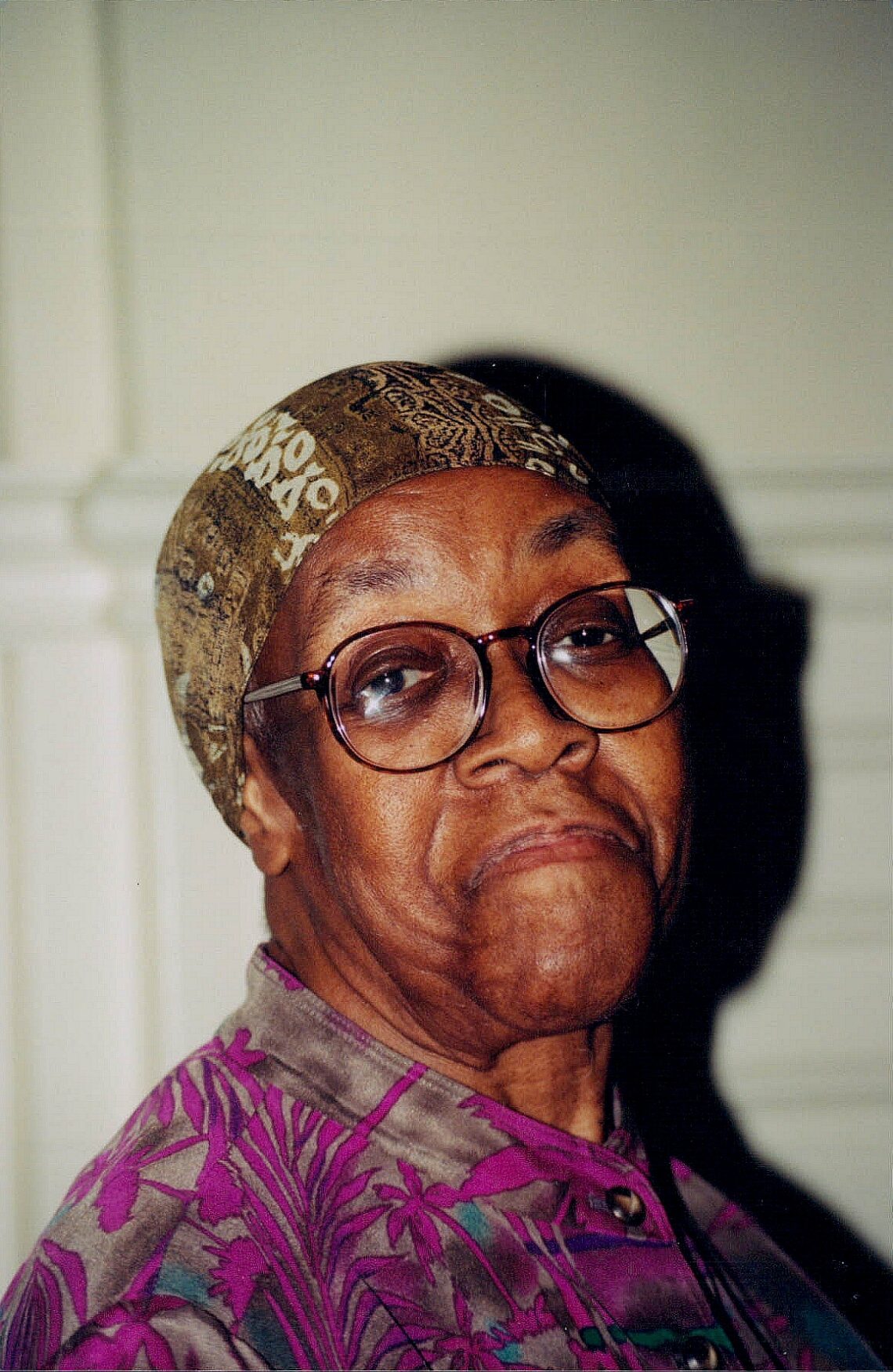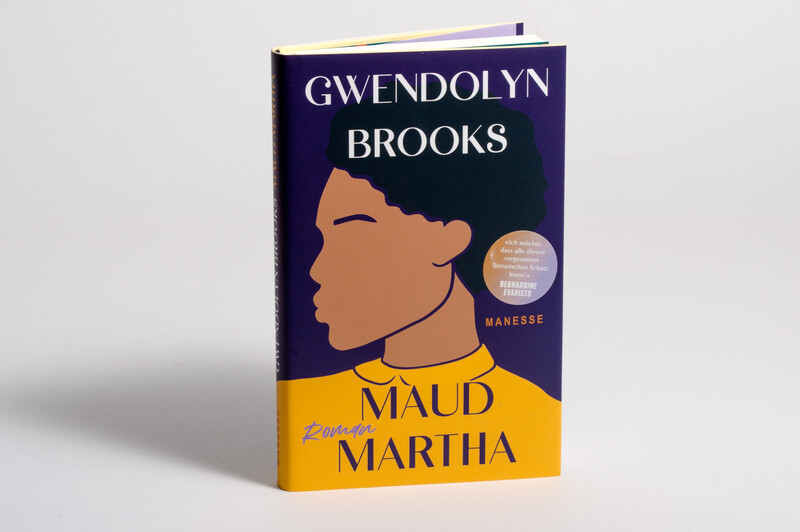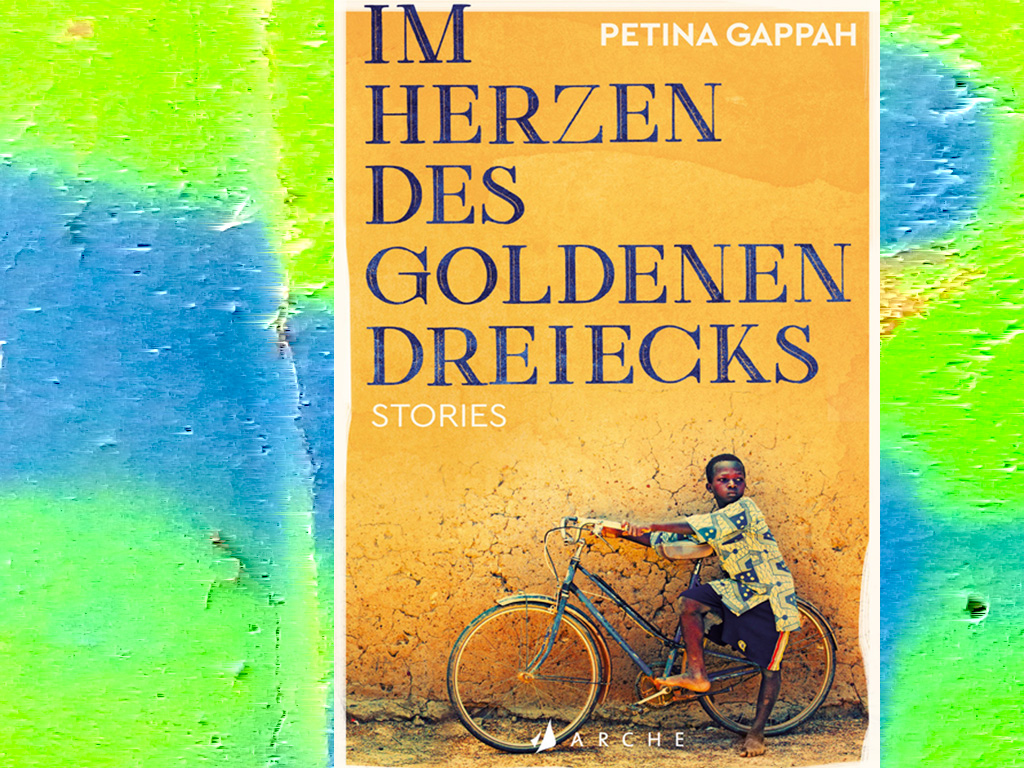
Maud Martha von Gwendolyn Brooks – A literary jewel is now available in German – deutsch/englisch
Es ist ein kleines Wunder, dass es dieses Buch gibt. Siebzig Jahre nach der Erstveröffentlichung in den USA, ist Maud Martha nun in Deutschland beim Klassiker Verlag Manesse erschienen. Es ist der einzige Roman der Autorin Gwendolyn Brooks. Brooks wurde durch ihre Gedichte berühmt, sie ist außerdem die erste Schwarze Autorin, die 1950 den Pulitzer Preis erhielt.
FOR ENGLISH VERSION PLEASE SCROLL DOWN
Poetisch ist auch das Buch angelegt, das die Leser:innen mitnimmt in das Chicago der 1920er bis 1940er Jahre. In vielen, autobiografisch gefärbten Beobachtungen, Momentaufnahmen und Schlaglichtern erzählt sie von ganz alltäglichen Erlebnissen eines jungen Mädchens und später der jungen Frau in ihrer nächsten Umgebung. Sie mochte Löwenzahn. “Sie hätte auch Lotosblumen gemocht oder Sommerastern oder japanische Iris… Aber hauptsächlich sah sie Löwenzahn.” Die vielen Träume dieses jungen Lebens kollidieren allzu oft mit der harten Realität. Wir sind im Chicago in der ersten Hälfte des Jahrhunderts, das schon seit der Zeit des Bürgerkriegs ein Zufluchtsort für ehemals versklavte Schwarze war. Es entstand eine der größten afro-amerikanischen Ansiedlungen der USA. Doch die weiße amerikanische Gesellschaft dachte gar nicht daran, der Schwarzen Bevölkerung die vollen Bürgerrechte zu geben und sie teilhaben zu lassen am gesellschaftlichen Leben. Es herrschte soziale, kulturelle und faktische Ausgrenzung.

Mit einer wunderbar empathischen Maud sehen wir, wie diese Welt ausschaut. Präzise beschreibt sie das Licht des Himmels ebenso wie die Farben der Backsteinmauern der Schule. Ihre Abscheu gegen Schmutz. Ihre Hoffnung, im Haus der Eltern wohnen bleiben zu können, obwohl der Pfändungsbeschluss schon da ist. Mit allen Sinnen nimmt sie ihre Umgebung war. Und sie will gut sein, wie sie im Roman sagt, ihr Angebot an die Welt. Das verlangt sie aber auch von der Welt selbst, von ihrem ersten Freund, von der ersten gemeinsamen Wohnung. Gut heißt, Chancen zu haben, Träume zu verwirklichen, in Wohlstand zu leben. Auch ihr eleganter Freund ist von diesen Träumen beseelt, vom Aufstieg, von großen Autos. Spätesten in der winzigen gemeinsamen Wohnung, der kleinen “Kitchenette” in einem Siedlungsbau, überwiegend für Schwarze, wird ihr allmählich klar, dass der American Dream vor allem für weiße Amerikaner gilt. Diese Details, die Beschreibungen, das war auch schon der Kosmos ihrer ersten gedichte, die Brooks ab 1945 schrieb, das allererste: “Kitchenette Building” in der Sammlung Bronzeville.
Sie und ihr Freund Paul hatten sich das eigene Apartment so vorgestellt, dass sie es wunderhübsch und up-to-date einrichten könnte, eines Tages die Fotografen der Zeitung Defender kommen und es ablichten: “Natürlich müssen wir klein anfangen, sagte Paul. Aber es wird nicht lange dauern und alle werden sich wundern”. Verändern dürfen sie aber nichts in der Wohnung. Hausregel. Der Frust ist groß. Nicht Glamour und Weiß. Grau herrscht vor, selbst im Geruch, wie Maud bitter feststellt. Stattdessen führt sie Zwiesprache mit einer Maus, die sie nach tagelanger Beobachtung in der Wohnung gestellt hat. Sie suchen Zuflucht in Theatern, Bars und Bällen, bei denen sie die Illusion des Aufstiegstraums weiter befeuern können.
Irgendwann ist auch ein Kind da. Die Kitchenette wird nun zum alltäglichen Dasein. Das Haus hat illustre Mitbewohner:innen. Sehr genau bekommen wir einen Eindruck davon, was es heißt, zur unteren Mittelschicht zu gehören. Sie gehen ins Kino der Weißen. Sind die einzigen Schwarzen. Registrieren die Blicke und die Ausgegrenztheit. Keiner will Small Talk mit Schwarzen halten. Es wäre doch so einfach. Im Kino, im Kosmetiksalon, wohin sie auch kommt, sie erlebt die Beiläufigkeit der Ausgegrenztheit, der Diskriminierung. Die abfälligen, rassistischen Bemerkungen. Sie wundert sich, wie gleichmütig ihre Schwarzen Mitmenschen es oft erdulden. Wo hingegen es in ihr brodelt, wie es auch insgesamt in der Schwarzen Community zu brodeln beginnt. Es sind die Anfänge der Schwarzen Bürgerrechtsbewegung in den 1930er Jahren, die Hoffnung aufkommen lässt. Doch noch steht das Arrangement mit der weißen Mehrheitsgesellschaft im Vordergrund. Auch Maud Martha will weiter ihre Träume nicht aufgeben.
“Tell the truth as you know it. Don’t try to force your poem to be nice or proper or normal and happy if it doesn’t want to be.” Gwendolyn Brooks
Maud Martha ist sicherlich kein radikales Buch. Nicht aus der Sicht von heute. Wenn man die Entstehungszeit berücksichtigt, ist dennoch der kämpferische Unterton im Buch erkennbar. Die Drastik mancher Wortwahl ist gekonnt gesetzt. Brooks lässt die Rassisten sich selber enttarnen.

Auch im echten Leben macht Gwendolyn Brooks im Laufe ihres Lebens eine Radikalisierung durch. Vom Erfolg des Pulitzer Preises lässt sie sich nicht blenden. Verlässt einen großen Verlag und arbeitet völlig unabhängig an ihren Gedichten und Texten. Immer aktiver mischt sie sich in den 1960er Jahren bis zu ihrem Tod im Jahr 2000 in die Schwarze Bürgerrechtsbewegung ein, spricht auf Veranstaltungen, nimmt Stellung. Als erste Schwarze wird sie 1976 in die Academy of Arts and Letters aufgenommen.https://artsandletters.org/ Die heutige Generation entdeckt sie immer wieder. Ihre Gedichte sind in der Gesellschaft angekommen: Colleges, Literaturpreise und Libraries wurden nach ihr benannt, ihre Gedichte gehören zum Kanon der amerikanischen Schulen; bei Obamas erster Inaugural 2008 wurde Brooks rezitiert.
Für die deutsche Übersetzung ist die renommierte Übersetzerin Andrea Ott verantwortlich, die schon andere Klassiker übersetzt hat.. Sie hat eine wunderbare Sprache gefunden. Der Roman ist auch deshalb ein großartiges Leseereignis. An einigen älteren Romanen hat sich Patina gesetzt. Nicht jedoch an Maud Martha von Gwendolyn Brooks. Siebzig Jahre hat es gedauert, bis es nach Deutschland kam. Nun ist es Zeit, dieses Buch zu lesen.
Hans Hofele
Gwendolyn Brooks: Maud Martha
Aus dem amerikanischen Englisch übersetzt von Andrea Ott
153 Seiten, Fester Einband, 22 Euro
Manesse Verlag
https://www.penguinrandomhouse.de/Buch/Maud-Martha/Gwendolyn-Brooks/Manesse/e611567.rhd
ENGLISH VERSION
It is a small miracle that this book exists. Seventy years after its first publication in the U.S., Maud Martha has now been published in Germany by the classic publisher Manesse. It is the only novel by author Gwendolyn Brooks. Brooks became famous for her poetry; she was also the first black author to win the Pulitzer Prize in 1950.
The book is also poetic, taking readers to Chicago from the 1920s to the 1940s. In many autobiographically tinged observations, snapshots and spotlights, she tells of the very everyday experiences of a young girl and later of the young woman in her immediate environment. She liked dandelions. “She would have liked lotuses, too, or summer asters, or Japanese irises…. But mostly she saw dandelions.” The many dreams of this young life too often collide with harsh reality. We are in Chicago in the first half of the century, which had been a haven for formerly enslaved blacks since the Civil War era. It became one of the largest African-American settlements in the United States. However, the white American society did not even think of giving full civil rights to the black population and let them participate in the social life. Social, cultural and de facto exclusion prevailed.

With a wonderfully empathetic Maud, we see what this world looks like. She accurately describes the light of the sky as well as the colors of the brick walls of the school. Her disgust with dirt. Her hope of being able to stay in her parents’ house, even though the attachment order is already there. She perceives her surroundings with all her senses. And she wants to be good, as she says in the novel, her offer to the world. But she also demands this of the world itself, of her first boyfriend, of their first apartment together. Good means having opportunities, realizing dreams, living in prosperity. Her elegant boyfriend is also inspired by these dreams, of advancement, of big cars. At the latest in the tiny apartment they share, the small “kitchenette” in a housing development, predominantly for blacks, it gradually becomes clear to her that the American Dream applies primarily to white Americans.
“Tell the truth as you know it. Don’t try to force your poem to be nice or proper or normal and happy if it doesn’t want to be.” Gwendolyn Brooks
She and her boyfriend Paul had imagined their own apartment so that she could make it wonderfully pretty and up to date, one day the photographers from the society magazine Defender would come and shoot it: “Of course we have to start small, Paul said. But it won’t take long and everyone will be surprised”.However, she must not change anything in the apartment. House rule. The frustration is great. Not glamour and white. Gray prevails, even in the smell, as Maud bitterly notes. Instead, she has a quarrel with a mouse that she has placed in the apartment after days of observation. They seek refuge in theaters, bars and balls, where they further liberate the illusion of the dream of advancement.
Eventually, a child arrives. The kitchenette now becomes an everyday existence. The house has illustrious housemates. Seh exactly we get an impression of what it means to belong to the lower middle class. They go to the cinema of the whites. They are the only black people. Register the stares and the marginalization. No one wants to make small talk with black people. It would be so easy. In the cinema, in the beauty salon, wherever she goes, she experiences the casualness of exclusion, of discrimination. The snide, racist remarks. She marvels at how equanimously her fellow blacks often endure it. Whereas, it’s bubbling up inside her, just as it’s beginning to bubble up in the Black community as a whole. It is the beginnings of the Black Civil Rights Movement in the 1930s that gives hope. But the focus is still on coming to terms with the white majority society. Maud Martha also continues to not want to give up her dreams.
Maud Martha is certainly not a radical book. Not from the point of view of today. Nevertheless, if one takes into account the period in which it was written, the militant undertone in the book is recognizable. The drastic nature of some of the word choices is skillfully placed. Brooks lets the racists expose themselves.

In real life, too, Gwendolyn Brooks undergoes radicalization over the course of her life. She is not blinded by the success of the Pulitz Prize. She leaves a large publishing house and works completely independently on her poems and texts. She became increasingly active in the black civil rights movement from the 1960s until her death in 2000, speaking at events and taking a stand. In 1976, she became the first black woman to be admitted to the Academy of Arts and Letters. https://artsandletters.org/Today’s generation discovers them again and again. Her poems have arrived in society: Colleges, literary prizes, and libraries have been named after her; her poems are part of the American school canon; at Obama’s first Inaugural in 2008, Brooks was recited.
The renowned translator Andrea Ott, who has translated other classics, is responsible for the German translation… She has found a wonderful language. The novel is also a great reading event for this reason. Patina has settled on some older novels. Not, however, on Maud Martha by Gwendolyn Brooks. It took seventy years for it to come to Germany. Now it is time to read this book.
Hans Hofele
Gwendolyn Brooks: Maud Martha
Translated by Andrea Ott
153 Seiten, Hard Cover, 22 Euro
Manesse Verlag
https://www.penguinrandomhouse.de/Buch/Maud-Martha/Gwendolyn-Brooks/Manesse/e611567.rhd
copyright: cultureafrica 2023



